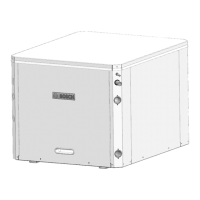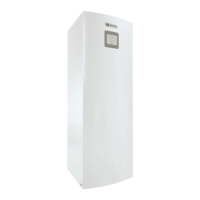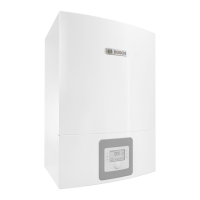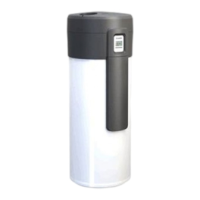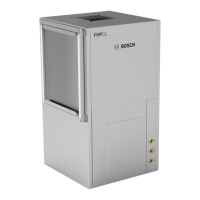Water systems and pipework
49
CS3000 AWP – 6721852570 (2023/04)
An option to remove pollutants is to install a filter.
Risk of freeze
If the unit or the relative water connections can be subject to
temperatures close to 0ºC:
• Mix water with ethylene glycol, or;
• Safeguard the pipes with heating cables placed under the insulation,
or;
• Empty the system completely in case of long non-use.
Be aware that the unit must always be protected from freeze.
Otherwise, irreversible damage may occur.
Anti-freeze solutions
Have in consideration that the use of an anti-freeze solution determines
an increase in a pressure drop.
Make sure that the glycol type used is inhibited (not corrosive) and
compatible with the hydraulic circuit components.
Do not use different glycol mixture (i.e. ethylic with propylene).
Be aware that most of the glycol types are corrosive under 20%. Mix the
water glycol mix proper before filling it in the system, otherwise the unit
can be damaged.
Table 46 Correction factors for glycol use
Table 47 Typical values for ethylen glycol (other glycol type values can be different).
The correction factors shown refer to water and ethylene glycol mixes,
used to prevent the formation of frost on the exchangers in the water
circuit during inactivity, in winter.
5.2 Dirt trap
• The water filter must be installed immediately in the water inlet of the
unit, in a position that it will be easily accessible for cleaning;
• Removing the filter will end the guaranty.
The filter must have an adequate mesh to prevent the entry of particles
grater that 0,5mm (30 mesh).
Fig. 62
Water flow-rate
The design water flow-rate must be:
• inside the exchanger operating limits (see the Technical data
chapter);
• guaranteed also with variable system conditions (for example, in
systems where some circuits are bypassed in particular situations).
If the system capacity is below the minimum flow, bypass the system as
indicated in the following diagram.
Fig. 63
If the system capacity exceeds the maximum flow, bypass the system as
indicated in the diagram below.
Fig. 64
Non-return valve
Provide non-return valves (A) for the installation in the case of several
units connected in parallel.
%Ethylene
glycol by
weight
0% 20% 30% 35% 40% 50%
Correction
factor for
unit cooling
capacity
1 0,973 0,965 0,963 0,96 0,95
Correction
factor for
flow rate
1 1,051 1,092 1,119 1,145 1,2
Correction
factor for
system
pressure
drop
1 1,268 1,482 1,6365 1,791 2,1
% Ethylene 5% 10% 15% 20% 25% 30% 35% 40% 45% 50%
Freezing temperature (ºC) -2 -3.9 -6.5 -8.9 -11.8 -15.6 -19.0 -23.4 -27.8 -32.7
Safety temperature (ºC) 3 1 -1 -4 -6 -10 -14 -19 -23.8 -29.4
0010044566-001
UNIT
Recirculation
0010044567-001
UNIT
Recirculation
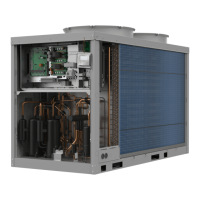
